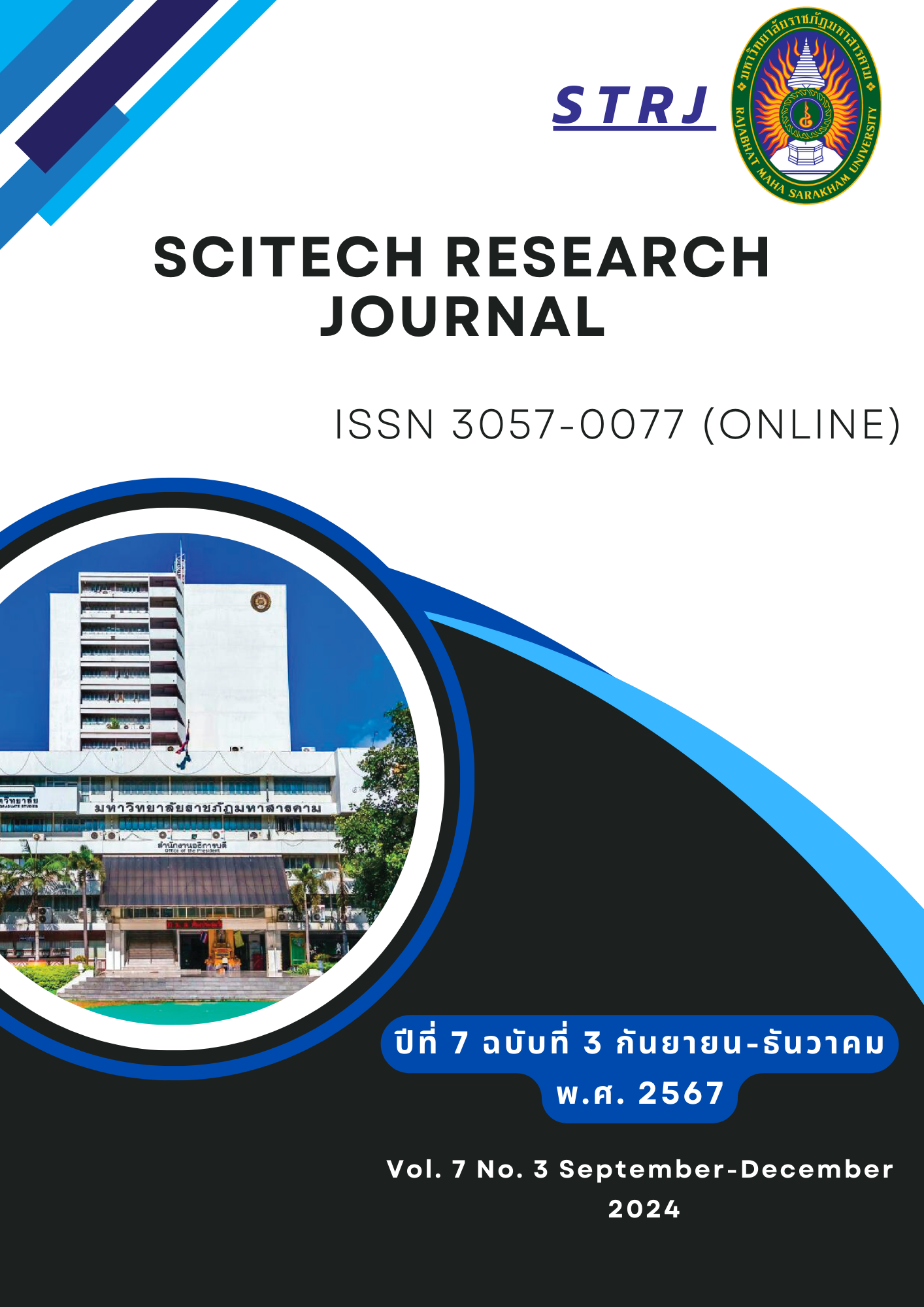Mosquito repellent charcoal extract from coconut shells mixed with dried kaffir lime peel powder
Keywords:
Charcoal briquettes, coconut shell charcoal, Kaffir lime peel powderAbstract
The objective of this research is to develop a briquette charcoal from coconut shell with dried bergamot skin that can repel mosquitoes. By finding the combustion efficiency of charcoal briquettes and the mosquito repelling efficiency in various ratios as follows: ratio 1 (1000: 60), ratio 2 (1000: 200: 100) and ratio 3 (1000: 500: 100). (Coconut shell charcoal: dry bergamot skin powder: Cassava flour) After that, the researchers took the charcoal briquette from the coconut shell charcoal with the dried kaffir lime in all 3 ratios to test the combustion efficiency and mosquito repellent efficiency . The calorific value increases, the 3rd ratio is the ratio with the best calorific value of 348.6681 KJ / kg. The 1st ratio : minimum moisture content is 5.9081%, which causes a small amount of ash. And the 2nd ratio : best density at 882.72 Kg / m3. The average combustion rate is 3.05 grams per minute. It can be used to cook well. No cracking Very flammable. In addition, the efficiency of mosquito repellent from charcoal from coconut shell with dry bergamot skin. The best repellent ratio was the 3rd ratio. It took 10 minutes for every mosquito to fall to the ground.
References
Anantanukulwong, R. (2019). Production of charcoal briquettes from agricultural waste materials. YRU journal of science and technology, 4(1), 47-53.
Atsawaruchikulchaim, A. et al. (2014). Utilization of durian and mangosteen peels in the form of compressed fuel. The use of durian and mangosteen peels as compressed fuel. Department of Science, Technology and Environment. Bangkok: Faculty of Environment and Resource Studies: Suan Dusit University.
Biomass Fuel and Energy Center. (2020). Biomass Potential in Thailand. Retrieved March 21, 2020. From www.iscisaraburee.sc.chula.ac.th.
Department of Energy Development and Conservation. (2017). Biomass. Retrieved February 20, 2020. From www.biomass.dede.go.th.
Deputy Editor. (2020). Properties of Kaffir lime. Retrieved March 21, 2020. From https.//www.honestdcs.com.
E.F. Aransiola et al. (2019). Effect binder type, binder concentration and compacting pressure on some physical properties of carbonized corncob briquette. Energy Reports. Nigeria. 909-918 .
General tourism (2020). Hiking in Thailand. Retrieved April 25, 2020. From https.//เที่ยวทั่วไทย.co.th.
H.A. Ajimotokan et al. (2019). Combustion characteristics of fuel briquettes Made from charcoal particle sand sawdust agglomerates. Scientific African. Nigeria. e0020
Hanphakphum, S. et al. (2016). The Effect of Mosquito Larvae Elimination and Mosquito Repellent of Crude Extracts and Tiger's Claw Essential Oils on Aedes Mosquitoes, Nuisance Mosquitoes and Chimney Mosquitoes. Bangkok: Faculty of Science and Technology: Suan Dusit University.
Khamkhomkhet, P. (2000). Analysis of mosquito repellent substances in some herbal plants. Chiang Mai: Chiang Mai University.
Kongtanchanfak, S. (2015). Development of Thai herbal plant extract products with the effect of repellent against annoying mosquitoes, Culex quinquefasciatus. Department of Biotechnology. Bangkok : Faculty of Applied Science: King Mongkut's University of Technology North Bangkok.
Pattanakul, M. (2008). Efficiency of Thiem Seed Extracts (Azadirachta excelsa (Jack) Jacobs.) on Blood–Sucking Protection of Mosquito (Aedes aegypti L.). Thaksin University Journal, 11(1), 35-44.
PD House Home Construction Center. (2020). 10 Mosquito Repellent Trees, Plant Them at Home, No Shadow of Harmful Insects. Retrieved March 21, 2020. From http://www.pd.co.th.
Sukhaphan, N. et al. (1993). Efficiency of herbal extracts in repelling mosquitoes. The 19th National Science and Technology Conference.
Thepsasanakun, W. et al. (2016). Study of the production of compressed fuel through the carbonization process from agricultural waste materials such as coconut shells. Study of the production of compressed charcoal from coconut shells. The 12th Thailand Energy Network Academic Conference. Chiang Mai.
Tosakun, S. et al. (2012). Development of Charcoal Briquettes from Coconut Shells as Alternative Energy. Development of compressed charcoal from coconut shells as an alternative energy. Industrial Engineering Academic Conference. Phetchaburi.
Wongchit, K. (2018). Herbs for repelling mosquitoes from the fence. Retrieved February 21, 2020. From https.//siamvath.co.th.



